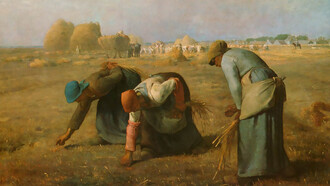Born in 1770, the youngest of five children, Eleanor Carter is best known for the first of her six novels, The Orphan of the Rhine, which was famously included as one of Jane Austen’s horrid novels in Northanger Abbey. Her father, Thomas Carter, was one of five brothers who qualified as country attorneys, eventually settling in Loughborough. When he died in 1773, without leaving a will, his widow and eldest brother administered the estate. Eleanor married Joseph Sleath in 1792 at the age of twenty-one, but by the age of twenty-four, she was a widow. Her second marriage to John Dudley was in 1823, following the death of his wife. Contrary to initial assumptions, she was not Catholic, even though she portrays Catholicism in a positive light in her novel.
The story begins in seventeenth-century France with Julia de Rubine, later known as Madame Chamont. Her son Enrico and the infant Laurette are the central characters around which the story is based. Although it is Laurette who is the orphan of the title, Julia de Rubine loses both her parents at the age of thirteen. On her deathbed, her mother commends her to the care of her aunt Madame Laronne but warns her not to accept a husband who is not Catholic and definitely not a Protestant. Madame Laronne sees Signor Vescolini as an eligible bachelor, whereas Julia objects to his reformed Lutheran faith.
This causes Madame Larrone to refer to her objection as based on a bigoted religious belief. Normally, this would be the view of eighteenth-century Gothic novels, but Madame Laronne is portrayed as extravagant and devoid of sensibility, and therefore her views are undermined. Signora d’Orfo’s father has a Catholic confessor in Father Alberto, who is portrayed in a negative light, suggesting he commit his daughter to a convent in order to ensure his eternal salvation, but we later discover the same father stands to inherit his employer’s wealth. This again casts doubt on his actions, where wealth is a corrupting influence. In contrast, Madame Chamont gives a positive example of the superior at the convent of the penitent nuns of the order of St Francis. She is described as well-educated with impeccable conduct, elegant, refined, and maternal.
Like Radcliffe’s positive role models in The Italian, her religion is of the heart rather than the letter of the law. Sleath suggests that where religion is based on benevolence, it has a positive impact, but when corrupted by greed, it becomes a source of manipulation.
Sleath uses fortress-like chateaus, often neglected and crumbling, to reinforce the depressing and gloomy atmosphere, along with symbolising the lack of care and attention of the ruling class. Madame Laronne has furnished her home with an opulent interior compared to the crumbling façade and is described as pursuing an elegant lifestyle. This extravagance precludes her from assisting her brother in his time of financial need. She is also disconcerted when Julia does not praise her lavish surroundings, having been used to much simpler tastes. This outward appearance also extends to Madame Laronne herself; although she is described as turning forty, she still possesses some outward beauty, which Sleath describes as being at pains to maintain but not always producing the desired effect.
A corrupted status is therefore conveyed through lifestyle and appearance compared to the virtuous simplicity of the main female characters. The male characters are corrupted by lack of restraint and overindulgence, leading to the disintegration of relationships and, in La Roque’s case, death. When he meets Laurentina, she is prepared to become his mistress in exchange for financial support. However, believing she has been unfaithful, he kills her in a fit of passion. What he does not realise is his letter has been altered and it is his wife who is killed. By making financial restitution to the Catholic church, his ecclesiastical obligations are discharged, but justice is not served. Thus, reinforcing the breakdown and corruption of society and its values.
Gothic novels were not only criticised for being formulaic but also for portraying women with an excess of sensibility. Sleath addresses this through Madam Chamont, who acknowledges that reading fiction containing distress and tender description can lead to indulgence in sensibility, thus depriving the mind of the rigours of critical thought. She even credits imaginary woe as leading to imbecility and romantic delusion. Sensibility and the overactive imagination are also associated with unreasonable fears. Laurette has come to fear the presence of the Marchese, so when she is informed of his arrival, she turns pale.
The Signora d’Orfo assures her she has nothing to fear and to fortify herself and not yield to imaginary distress. Sleath states Laurette sought to profit from such advice, accepting virtuous precepts and examples with gratitude and admiration. Sleath does not appear to be negating Laurette’s fear of the Marchese, only that she is able to conquer these feelings. The Marchese also comments on Laurette’s character, stating she had a highly cultivated mind whose strength, softness and elegance gave power and energy to beauty. Like Radcliffe’s heroines, this nobility of character lifts her above the young, naïve, uneducated heroines of novels such as The Monk.
Yet she still cannot escape the restraints of propriety, which require her not to declare her feelings for Enrico and enter into an engagement without the permission of those she relied on for protection. Instead, she trusted in the goodness of providence and acted with caution and dignity, enduring evil with patient firmness.
Sleath’s novel, despite being labelled one of the horrid novels in Austen’s Northanger Abbey, follows many of the principles used by Radcliffe, along with offering a more positive view of Catholicism when linked to benevolence. She actively condemns excessive sensibility in her heroines in favour of a more stoic fortitude, which would have been approved of by Austen.















